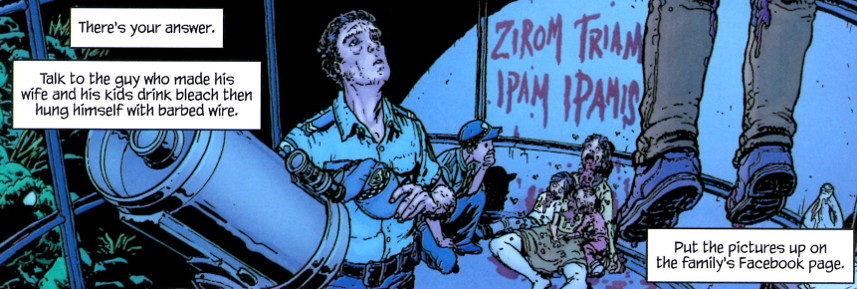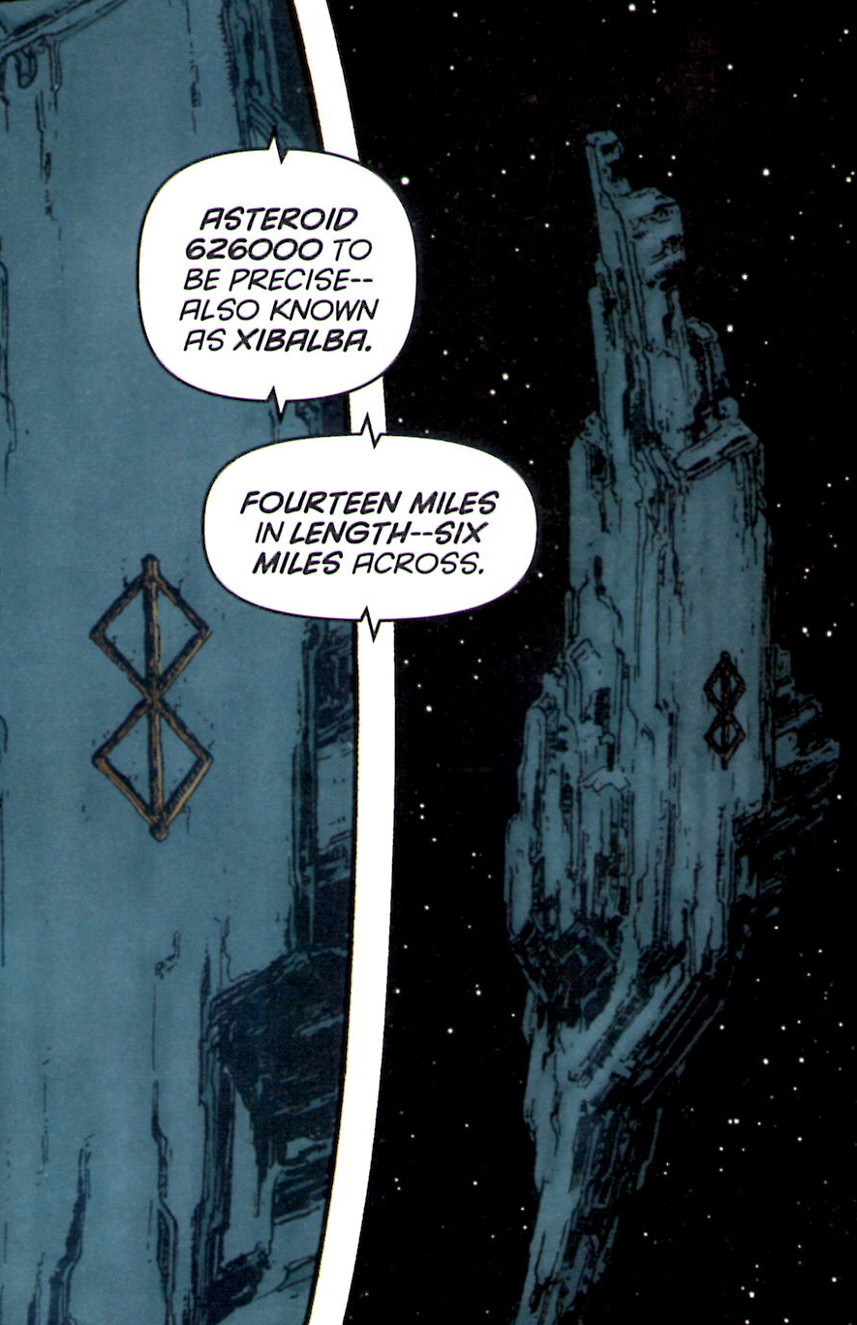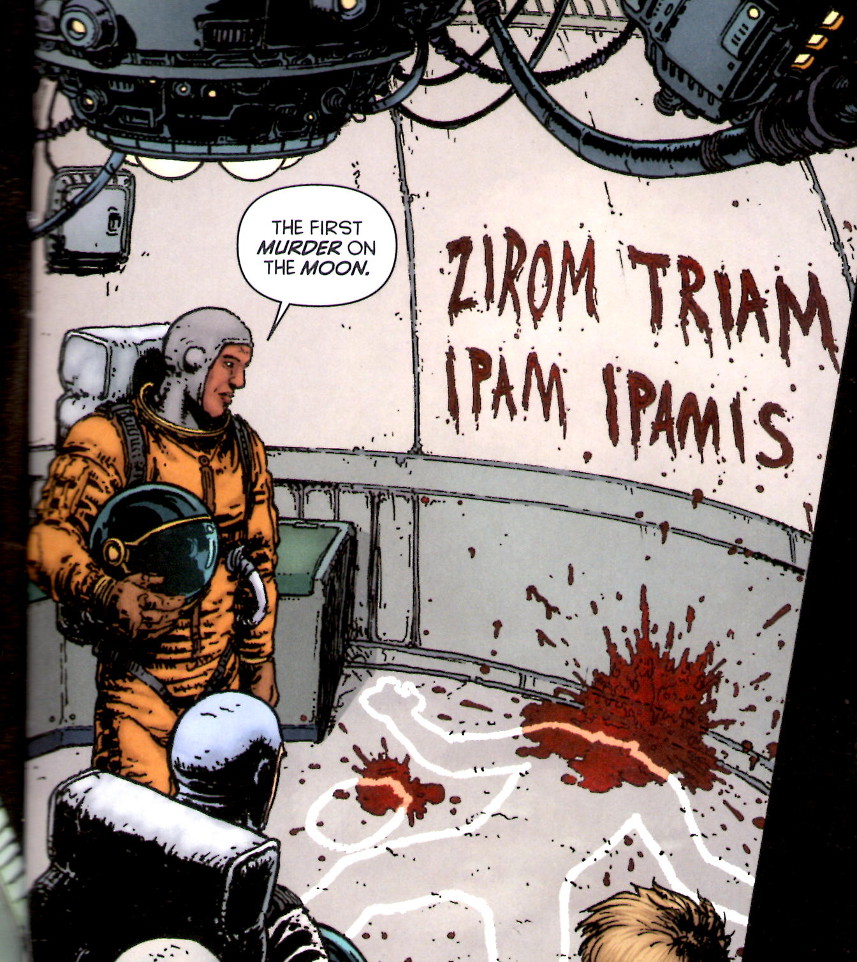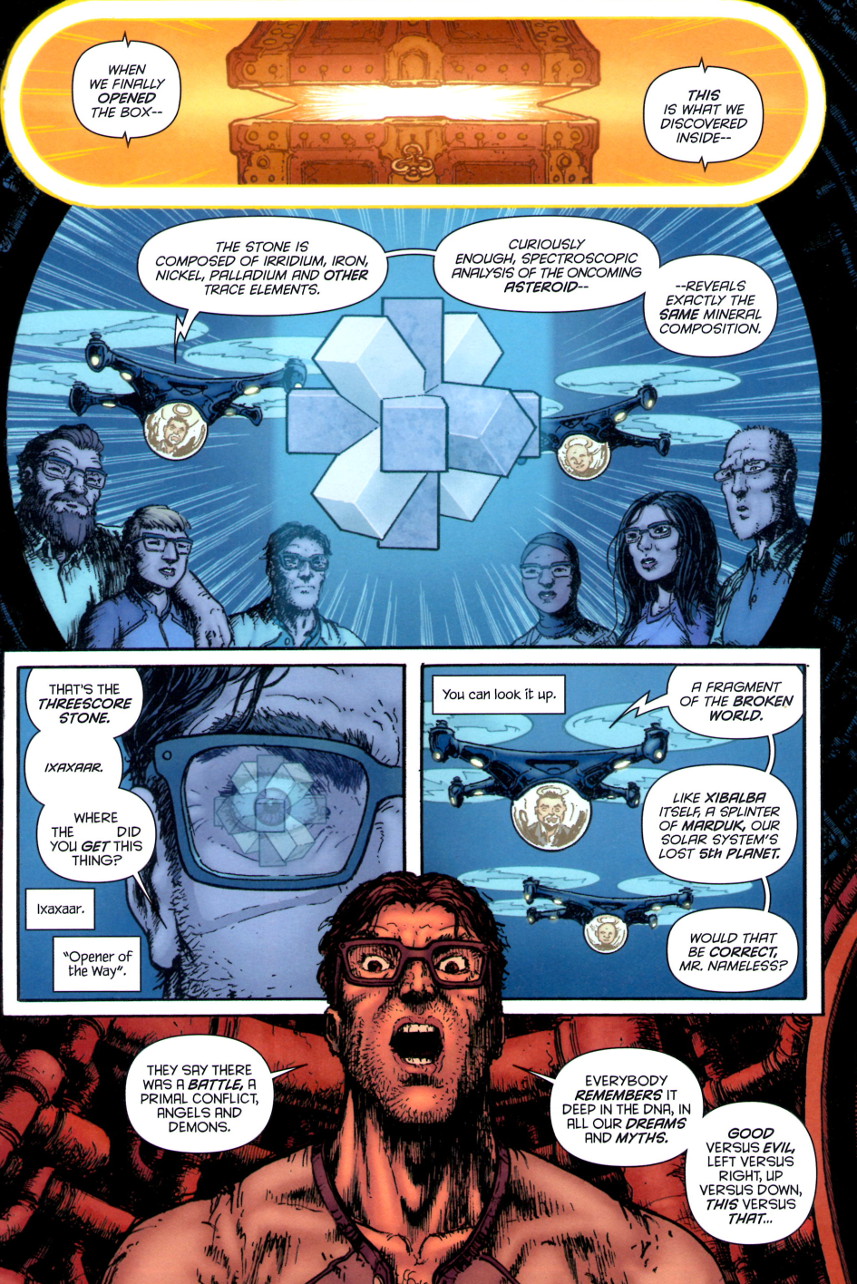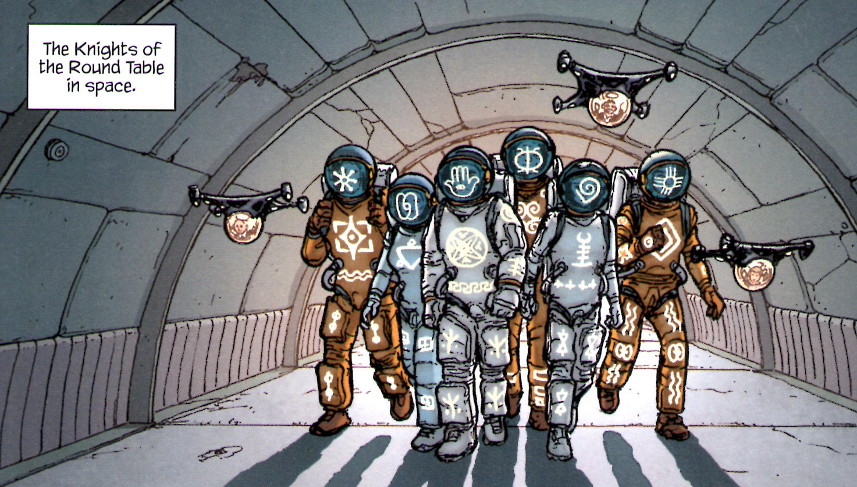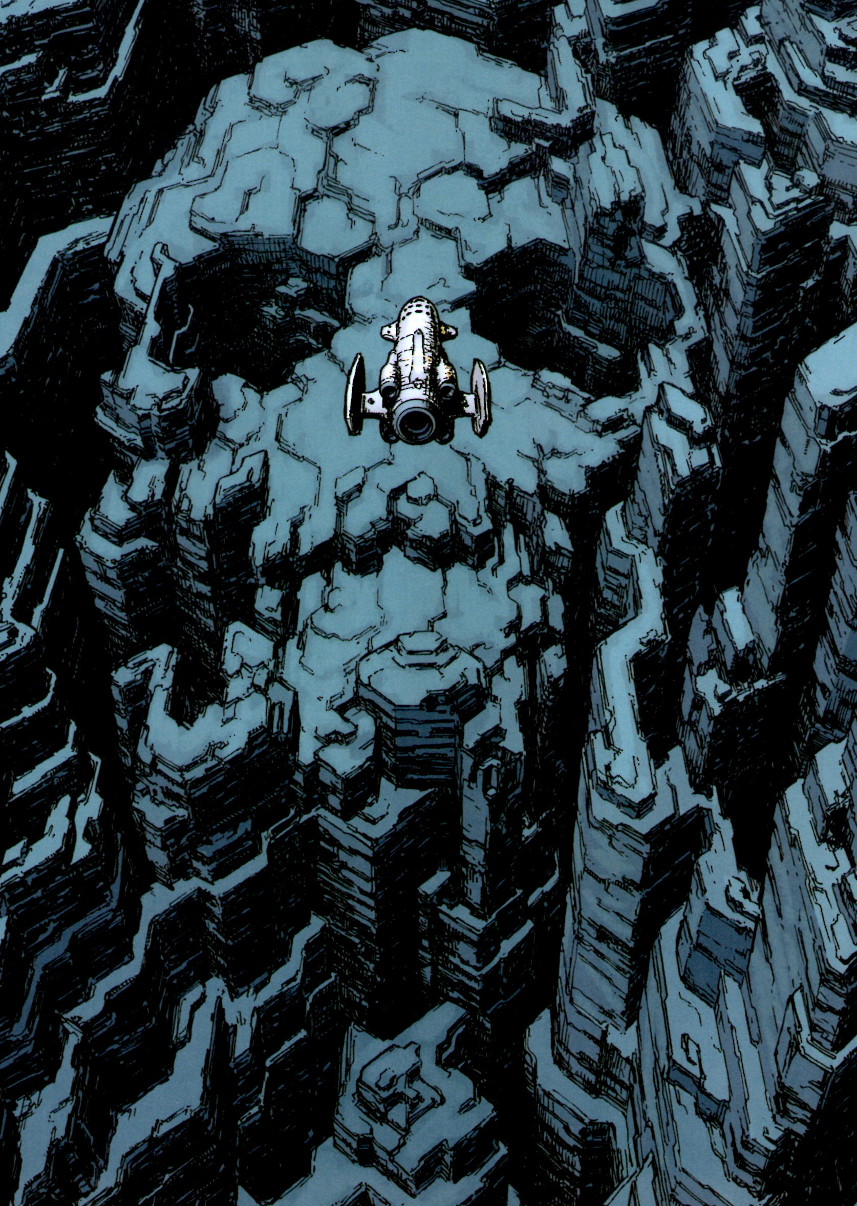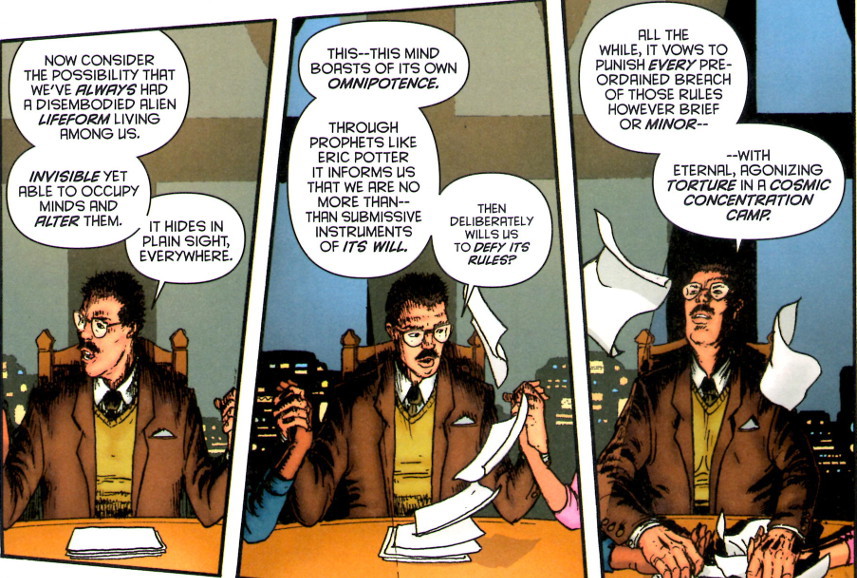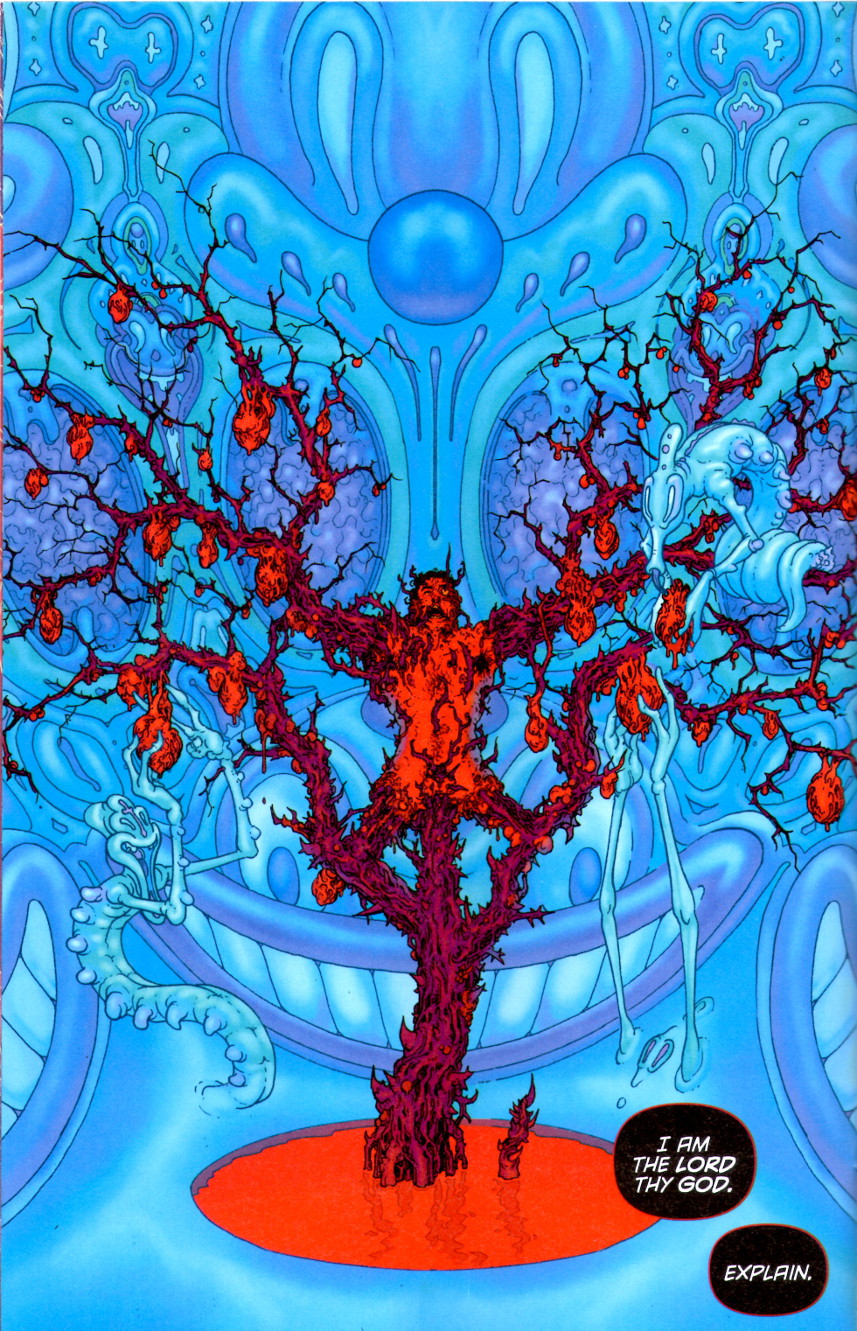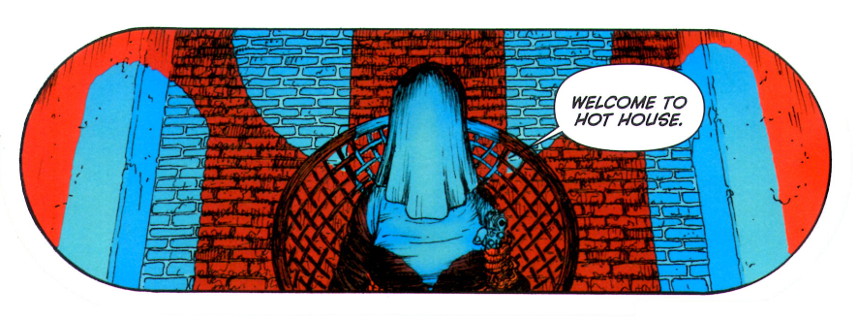I have a sort of love/hate relationship with Grant Morrison. I generally like his trippy, out-there concepts and the way he links and connects symbolism from various sources. I suppose I get this latter tendency from my interest in semiotics. On the other hand, he tends to confuse profundity with complexity; his verisimilitude is disjointed and unreal; and he has an axe to grind politically and religiously that often leaves a bad taste in my mouth. My reaction to him is similar to my feelings towards Beavis and Butthead; I like to watch their antics and listen to them babble but I but don’t heed a word they say.
So it was with some trepidation that I signed onto another Morrison (perhaps he thinks he’s Jim Morrison – hmmm) excursion into the unknown called Nameless.
Nameless is both the series title and the ‘name’ of the lead character in this ongoing series Illustrated by Chris Burnham and published by Image Comics. To call Morrison’s storytelling non-linear doesn’t do justice to the dream-within-a-dream method by which he stiches a large array of Jungian archetypes together. I suppose I could warn of spoilers to follow but I doubt it. His basic method is to lay it all out there and let suspense be the guiding principle rather than surprise.
The basic motifs employed are ones of horror, ancient ruins and elder gods, philosophical revulsion, and the kind of righteous indignation only an alienated, existentialist can exhibit. I get the notion that Morrison sees himself in the role of the nameless protagonist.
Issue #1 open with a connection of world-wide violence to sinister other-worldly forces reminiscent of Lovecraft’s mass hysteria episode in The Call of Cthulhu. Particularly graphic is the scene with the father who has brutally slain his family before ending his own life just after he posted to Facebook.
The phrase ‘Zirom Triam Ipam Ipamis’ is one of these common motifs that links the visual story telling together – much like a hidden object game. The language in which this phrase is expressed is Enochian, the language of angels. The source of the otherworldly and sinister influence is Xibalba, the Mayan home of fear wherein exists there underworld. In Morrison’s telling, Xibalba is a large asteroid heading for a collision course that will wipe out all life on Earth.
Of course, the asteroid bears a sigil warning of the evil inside.
Nameless finds all this out (maybe) as he finishes a job retrieving a Dream Key from the Veiled Lady.
What exactly is a Dream Key and why the Veiled Lady has it is not very clear at this point. What is clear is that the theft commissioned by a billionaire by the name of Paul Darius, who then offers a position in his save-the-world mission to Nameless since the latter has now proved his ‘cred’ to the former.
Nameless is soon whisked off to Darius’s moon base, which will serve as a staging area before they journey to intercept and divert Xibalba. Upon his arrival, Nameless learns why he was summoned –his predecessor has been murder at the hands of another uber-genius in the employ of Darius.
Again the Enochian phrase ‘Zirom Triam Ipam Ipamis’ is present at a scene of horrific violence (Cthulhu F’htagn). During some subsequent briefing, all is revealed
and we find that the Dream Key opens a box that contains a splinter from our solar system’s lost 5th world of Marduk, which was destroyed in an epic conflict between angels and demons dating back into time immemorial.
Undaunted by all these revelations that team readies their plan (some absolute nonsense in the way of science fiction here) to use a conventional bomb to slow the asteroid and then their anti-gravity tractors to move it away from Earth. So they have anti-gravity tractors, implying that they’ve harnessed quantum gravity, but they can’t obliterate the asteroid outright.
As the team gathers for their journey to Xibalba. Each, horronaut (my phrasing) is outfitted with occult protection in the way of symbols and signs on their suits
and off to the asteroid they go. Here the story slows down and the pacing becomes overbearing. We are treated to frame after frame of ominous warnings with nothing more than ‘happy drugs’ administered by the suit to explain how the crew continues to stay calm and ignore their senses. How they can’t get the clear warning from the asteroid’s landscape is beyond me.
Even when they figure out that Xibalba is a prison where the angels bound the worst demons and that the Threescore Stone they possess is a key to open the locks and let the evil out they continue their mission.
Lots of gruesome corruption of mind, body, and soul ensues and then the really trippy part begins. Nameless begins dreaming dreams, within dreams, within dreams, and so on. He’s suddenly in a doctor’s office being treated for some type of post-traumatic stress.
Note the Sephiroth in the background compose of organs (perhaps hearts) – yet more visual semiotics in play. The stress that Nameless is trying to forget is a botched séance years before in which he and twelve others tried to make contact with the entity found within Xibalba using the Threescore Stone.
It is during this long-winded diatribe that Nameless realizes, with complete philosophical revulsion, that the lifeform that the head researcher is taking is God. And here Morrison jumps the tracks and let’s his hostility to religion get the better of him. God in the Western Tradition is too large to fit within the Universe as a whole let alone be imprisoned on an asteroid. Each of the séance participants is from the Western tradition and yet none objects or points out Aquinas’s statement that God is not in a genus. This doesn’t require that any of the participants believe in God but simply that they actually showed up in college when they taught college.
Anyway, shots of the doctor dream and the séance dream are interspersed with Nameless’s suffering within Xibalba (whether this is also a dream is unknown)
Sure looks like Mickey Mouse as the top of that torture pillar with a grinning Donald Duck below. Perhaps Morrison was scared by the Matterhorn or Space Mountain on a visit to Disney Land as a kid, perhaps he hates Disney Corporation for its success, who knows or cares.
As Issue #5 closes, we once more see the Veiled Lady playing a role in Nameless’s physical, mental, and psychological suffering.
Where the story goes from here I’m sure I don’t know. All I do know is that a set of interesting premises, intriguing symbols, and inspired visuals are aimlessly flopping around under the creative direction of Grant Morrison.

